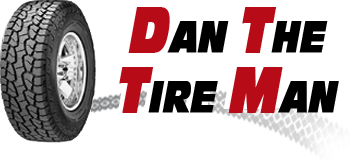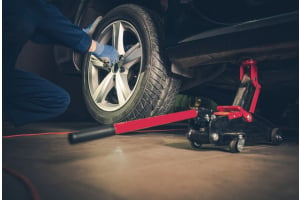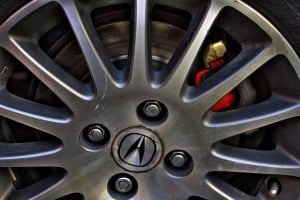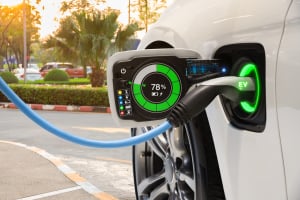
At DanTheTireMan.com, we’ve helped thousands of drivers find the right tires for their trucks, SUVs, trailers, and work vehicles; whether they’re hauling heavy loads every day or just want the peace of mind that comes with a stronger tire. One question that comes up constantly is:
“What exactly does Load Range E mean, and how much weight can those tires really handle?”
It’s a great question, because this rating affects how your vehicle rides, how much weight you can safely carry, and even how long your tires will last. Let’s break it down in plain English so you know exactly what you’re buying and whether Load Range E tires are right for your needs.
What “Load Range” Actually Means
When you look at a tire’s sidewall, you’ll see a string of letters and numbers — things like LT275/65R18 E. That last letter is the load range, and it tells you how strong the tire is and how much air pressure it can safely hold.
Think of load range as the tire’s backbone strength. The higher the letter, the stronger the construction and the more weight the tire can handle. It used to correspond directly to “ply rating” — how many layers of material were used — but modern tire materials are stronger, so the letter is now a general strength indicator rather than a literal ply count.
Here’s a quick rundown:
- Load Range C – 6-ply rated, up to 50 psi
- Load Range D – 8-ply rated, up to 65 psi
- Load Range E – 10-ply rated, up to 80 psi
That’s why Load Range E tires are so popular for ¾-ton and 1-ton trucks, trailers, and heavy-duty vans. They’re built to take the extra weight without flexing too much or overheating.
How Much Weight Can a Load Range E Tire Carry?
Here’s where people usually want numbers — and the answer depends on your tire size and the air pressure you’re running.
Most Load Range E light-truck tires can handle roughly 3,000 to 3,750 pounds per tire when inflated to the proper pressure (typically 80 psi cold). Smaller trailer tires with an E rating might be closer to 1,500 lbs each, while large all-terrain truck tires can hit that 3,700 lb mark or higher.
To find your exact number:
- Look for the Load Index on your sidewall — it’s the number right before the speed rating (for example, 123R).
- Check the manufacturer’s load index chart — it will tell you the maximum pounds each tire can carry at its rated pressure.
As an example, a tire labeled LT275/70R18 E 123/120R can carry around 3,415 lbs at 80 psi. Multiply that by four tires, and your truck could support around 13,660 lbs total (including vehicle weight, passengers, and cargo).
Why It Matters
If your truck or trailer spends its life loaded up — whether that’s with tools, construction materials, ATVs, or livestock — then load capacity isn’t just a number; it’s a safety margin. A tire that’s underrated for your setup can flex too much, build heat, and eventually fail.
That’s why many drivers move up to Load Range E when they:
- Tow heavy trailers (campers, boats, enclosed trailers)
- Carry heavy cargo (equipment, lumber, tools, supplies)
- Drive long distances under load
- Work in rough conditions (gravel, construction sites, farms)
It’s all about keeping the tire stable under stress. The stronger the sidewall, the less it flexes — meaning cooler operation, longer tread life, and safer handling.
Inflation Pressure Is Everything
Here’s something most drivers don’t realize: a Load Range E tire only achieves its full weight capacity at its rated air pressure.
That means if your E-rated tire says 80 psi max on the sidewall, but you’re only running 60 psi, you’re not getting that full 3,400 lb capacity. Tire load capacity drops quickly as pressure drops.
You can think of air as part of the tire’s structure — it’s what holds the weight. The tougher construction just lets the tire safely contain higher pressures.
At Dan the Tire Man, we always recommend checking your tire pressure cold (before driving) and adjusting it based on your load. For everyday empty driving, you can safely lower it a bit for ride comfort, but before towing or hauling, bring it back up to full inflation.
Benefits of Load Range E Tires
Let’s look at the biggest reasons people switch to or stay with Load Range E:
- Heavier load capacity – Obvious but important. You can haul or tow more safely.
- Tougher construction – E-rated tires have reinforced sidewalls and belts, which resist punctures, cuts, and sidewall flexing.
- Better stability – Especially noticeable when towing large trailers or hauling tall loads — less sway, more control.
- Longer life under heavy use – They wear slower when used properly because they’re not constantly at their stress limit.
The Downsides (And How to Manage Them)
Load Range E tires aren’t for everyone. There are a few trade-offs:
- Stiffer ride – You’ll feel bumps more when the truck is empty.
- Heavier tire weight – Adds a bit to rotational mass, which can slightly affect fuel economy.
- Higher cost – E-rated tires typically cost more because of the added materials and certification.
If you don’t haul or tow very often, you might not need the extra stiffness. But for anyone who regularly uses their truck like a truck, those trade-offs are worth it.
A good way to balance comfort and strength is to run proper pressure for your load. Many drivers drop to around 60–65 psi when unloaded, then pump back up to 75–80 psi for towing. Just never go below what’s safe for your vehicle’s weight.
Can You “Upgrade” to Load Range E?
If your truck came with Load Range C or D tires, you can often upgrade to E — but there are a few things to check first:
- Wheel pressure rating – Your wheels must be rated for the higher psi (usually stamped on the inside of the rim).
- Ride comfort – Expect a firmer feel, especially on rough roads.
- Vehicle capacity – Upgrading your tires won’t increase your truck’s official payload or towing ratings — those limits come from your axles, frame, and brakes. But you’ll be adding a nice cushion of safety.
Many customers upgrade simply for durability — even if they don’t max out the load rating, they like knowing their tires can handle rougher conditions without issues.
Load Range E vs. Load Index — Don’t Mix Them Up
The load range letter (like E) tells you how strong the tire’s construction is and what max pressure it’s built for.
The load index number gives the exact weight it can carry.
So while all Load Range E tires can handle high pressure, not all have the same weight limit. A smaller E-rated tire might top out around 2,800 lbs, while a larger one can hit 3,700 lbs. Always go by the load index chart for your specific size.
Real-World Example
Let’s say you’re running a Ford F-250 with LT275/65R20 E tires.
Each tire is rated around 3,640 lbs at 80 psi. That’s a total of 14,560 lbs across all four tires — well above what the truck will ever see, even when loaded to capacity.
Now compare that to a lighter Load Range D tire of the same size, which might only handle 3,085 lbs at 65 psi. It’s easy to see why most ¾-ton and 1-ton trucks leave the factory on E-rated rubber.
How to Tell If Your Load Range E Tires Are Working for You
A few signs you’ve made the right choice:
- The truck feels stable when towing — no extra sway or bounce.
- You don’t see uneven tread wear from overflexing.
- The tires run cool after long drives under load.
- You have consistent, confident braking even when hauling weight.
If you ever notice the opposite — soft or bouncy feel, excessive heat, or worn shoulders — it’s time to check air pressure or reevaluate whether your tires match your load.
Common Myths About Load Range E
Let’s clear up a few misunderstandings we hear a lot:
- “Load Range E tires are only for commercial trucks.”
Nope. Plenty of weekend towers and RV owners use them for safety and peace of mind. - “They ride too rough for daily use.”
If inflated properly for your load, they can ride just fine. The harsh ride happens when they’re over-inflated while unloaded. - “If I switch to Load Range E, I can haul more weight.”
Not legally — your vehicle’s GVWR (gross vehicle weight rating) doesn’t change. But you’re reducing the chance of tire-related failure, which is a big deal.
When You Shouldn’t Use Load Range E
If your truck or SUV spends its entire life empty or used like a daily commuter, you may not need Load Range E tires. They’ll still work, but you’ll be paying for extra strength you rarely use — and you might prefer a smoother ride from a lighter tire.
For city driving, moderate towing, and everyday use, Load Range C or D may do the job just fine.
But for anyone who tows often, drives long distances, or runs their vehicle near its payload limit — Load Range E is the smart move.
The Bottom Line
Load Range E means the tire is built tough — equivalent to a 10-ply rating and designed to handle higher air pressure (usually 80 psi). That translates to higher load capacity, stronger sidewalls, and better heat control under stress.
At DanTheTireMan.com, we carry a full selection of Load Range E truck, trailer, and all-terrain tires that balance strength, ride comfort, and price. Whether you’re outfitting a work truck, an off-road rig, or a weekend hauler, we can help you find the right match for your exact load and driving needs.
???? Shop Load Range E Tires Today: DanTheTireMan.com — where we make it easy to get new tires with $0–$49 down, no hard credit check, and free shipping across the U.S.
Because the right tire doesn’t just carry your load — it carries your confidence, too.





